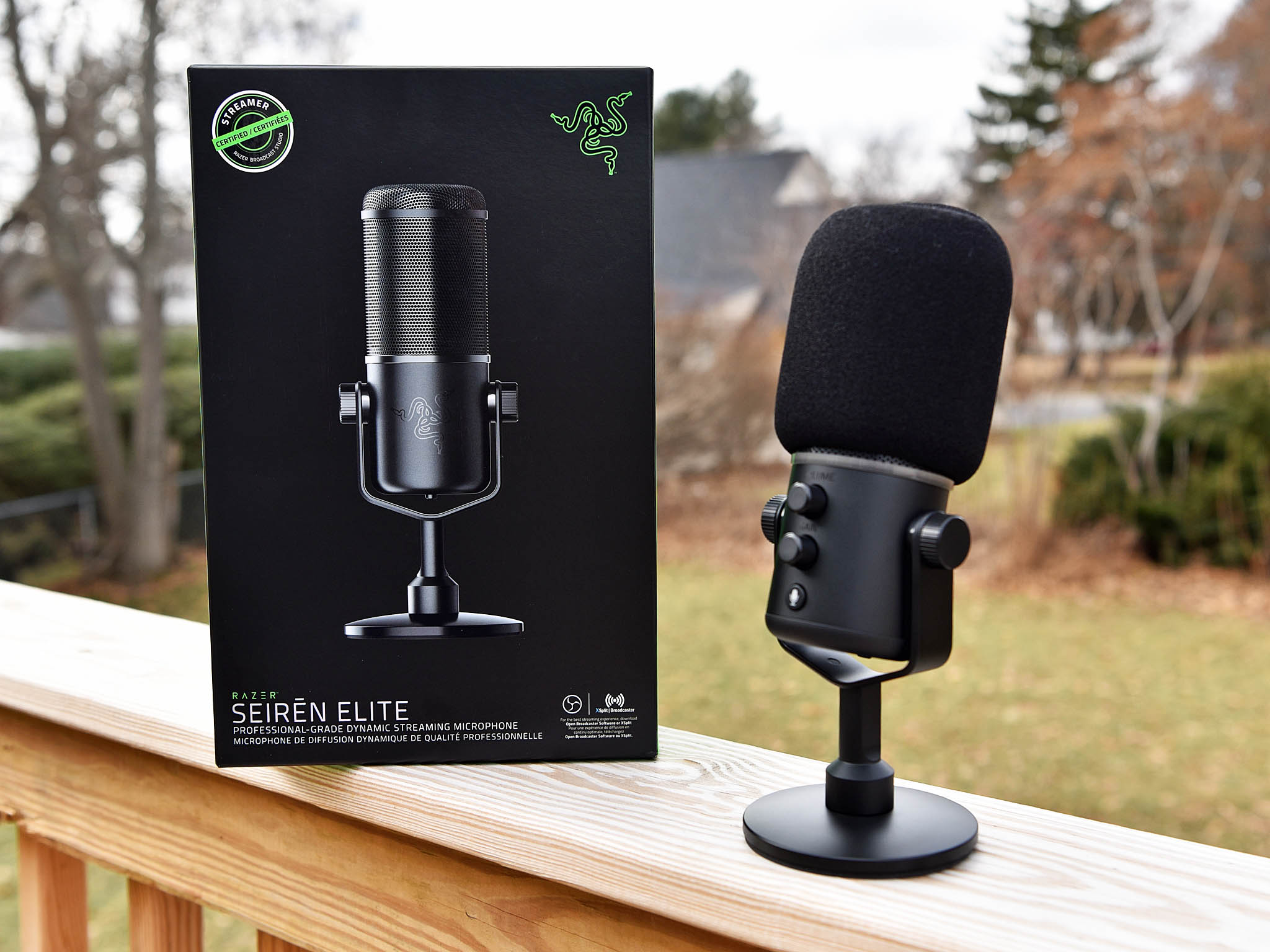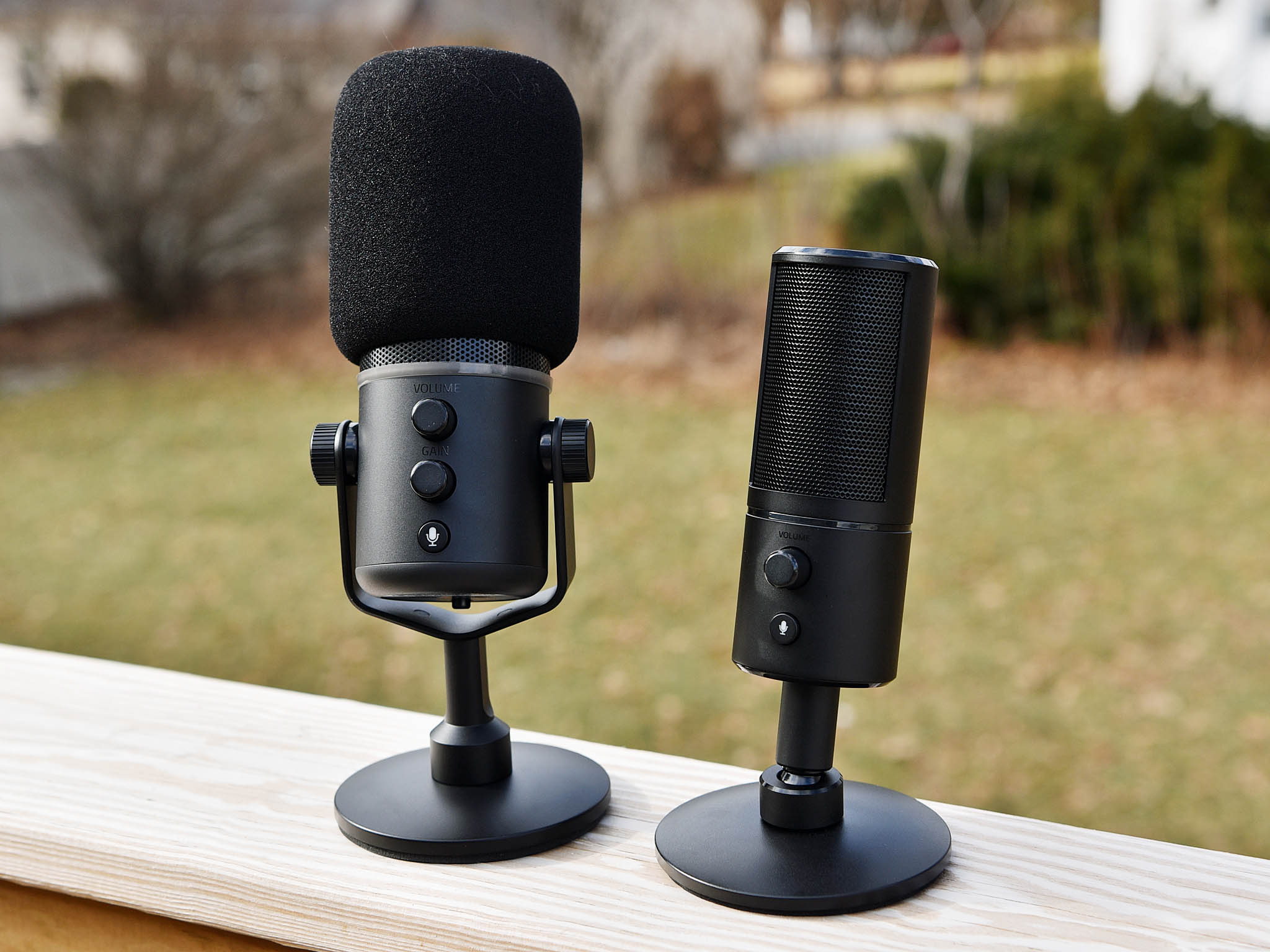Razer's all-new Seiren Elite microphone sets the bar for streamers, broadcasters
The new Razer Seiren Elite brings a pro-level microphone to gamers and streamers. Here's a sneak peek and when you can get yours.

The world of esports continues to grow in popularity, so it only makes sense for one of the premier gaming hardware manufacturers to get in on the action. Razer has already introduced a microphone (the $99 Seiren X) and a web camera with a neat circular LED (the Kiyo), but now the company is ramping it up with the Seiren Elite – a high-end, high-grade microphone that game streamers and even broadcasters would appreciate.
The Seiren Elite ($199) follows in the steps of the Seiren Pro ($249), but with a redesigned single capsule design with a built-in headphone amplifier, a high-pass filter (for eliminating low-frequency vibrations), and limiter. The result is supposed to be a "warmer vocal tone" compared to other microphones on the market.

Seiren Elite features
- Single Dynamic Capsule – For rich and warm vocal quality
- Inbuilt High-Pass Filter – For ultra-clean recording signals
- Digital/Analog Vocal Limiter – For zero distortion
- 16-bit/48kHz Resolution – To optimize your stream
- Zero Latency Monitoring – For zero audio lag
- Flat Frequency Response Monitoring – For accurately reproduced sound
Microphone Specifications
- Sample Rate: min 44.1kHz / max 48kHz
- Bit Rate: 16bit
- Capsule: Single Dynamic Capsule
- Polar patterns: Cardioid
- Frequency response: 50Hz-20kHz
- Connectivity: USB only
- Max SPL: 120dB

Headphone amplifier
- Impedance: ≥ 16Ω
- Power output (RMS): 85mW (at 16 Ω)
- Flat Frequency Response: Yes
- Zero-Latency Monitoring: Yes
The Seiren Elite features a micro USB connector and includes a braided USB cable to connecting to any PC. Like Razer's recent broadcast-focused hardware there is no software required to run the Seiren Elite making the microphone truly plug-n-play.
The bottom also features a push-button high-pass filter, which should filter out background noises like fans or air-conditioner hums usually found in offices or home environments. Another button on the front is illuminated with an LED to lets users mute the microphone with ease.
A 3.5 microphone port with a built-in amplifier makes the Seiren Elite an all-in on the device without the need for "external mixers, amplifiers or signal converters."
Real-world usage

I've been using the Razer Seiren Elite for the last few days. Compared to my current Rode Podcaster the sound with the Razer is much richer and warmer. The built-in windshield helps shield any audible pops or breaths and is preferable to the more traditional windscreen filters used by home broadcasters.
The all-metal base stand and microphone together weight 790 grams (1.74lbs) giving the system a nice heft and solid feel. The cushioned bottom is also ideal with just minimal rocking if you shake your desk.
Get the Windows Central Newsletter
All the latest news, reviews, and guides for Windows and Xbox diehards.
Like most high-end microphones the base station is threaded on making it easy to remove for travel, or, with an adapter to add to a shock mount or swivel microphone boom.


The one downside for some pro-level users may be the lack of XLR connection, but USB (even for Rode) is becoming increasingly the way to go for convenience.
The overall build quality is excellent, and the adjustable swivel mount gives some extra positioning options even when using a studio swivel mount.
Pricing and availability

Look for the Seiren Elite to go on sale this month at razerzone.com both in the U.S. and worldwide. Pricing is $199.99 while the lower specced Seiren X is $99.99.
Do you want to hear the all-new Seiren Elite in action? Tune into the weekly Windows Central Podcast on Fridays 2:30 PM ET on mixer.com/windowscentral where I'll be using the microphone in place of my usual Rode Podcaster!

Daniel Rubino is the Editor-in-chief of Windows Central. He is also the head reviewer, podcast co-host, and analyst. He has been covering Microsoft since 2007 when this site was called WMExperts (and later Windows Phone Central). His interests include Windows, laptops, next-gen computing, and wearable tech. He has reviewed laptops for over 10 years and is particularly fond of 2-in-1 convertibles, Arm64 processors, new form factors, and thin-and-light PCs. Before all this tech stuff, he worked on a Ph.D. in linguistics, performed polysomnographs in NYC, and was a motion-picture operator for 17 years.
